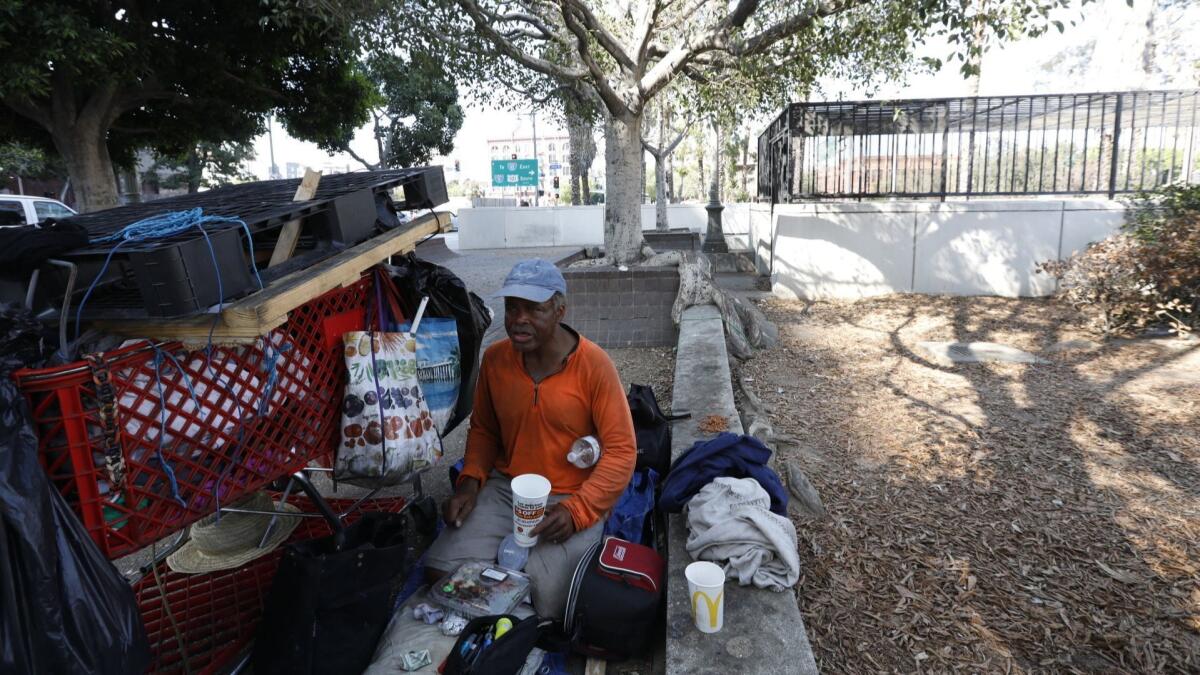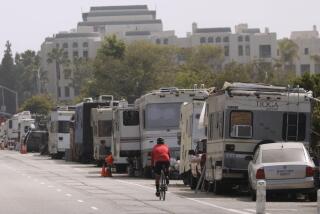L.A. looks at former museum and factory sites for downtown homeless shelters

Los Angeles took a step Tuesday toward converting a vacant children’s museum and a textile factory into crisis shelters to take homeless people off the streets of skid row and other parts of downtown.
The sites are outside skid row’s 50-year-old homelessness “containment” zone. But the council vote Tuesday to evaluate the locations could be the beginning of transforming skid row, the most concentrated homeless enclave in the country, and lifting a longtime barrier to the march of downtown development.
“Skid row is the result of years of neglect and legal decisions,” said City Councilman Jose Huizar. “We have to be creative.”
Mayor Eric Garcetti has called for a new homeless shelter in every council district by the end of the year to accommodate 23,000 residents who live outdoors. Officials are considering more than two dozen potential sites for new shelters citywide.
Huizar had called for additional downtown locations for the 2,100 people who live in skid row’s block after block of encampments. A city report prepared in response to Huizar’s request found that 358 homeless people per square mile live in skid row, by far the densest massing in the city. An additional 1,500 homeless people are scattered throughout downtown.
The report said it would take 17 new interim housing sites, housing 95 to 100 people apiece, to shelter 1,800 of skid row’s homeless people — the number authorities believe would be open to shelters. The cost would be $54 million the first year and $30 million in following years, the report said.
The estimate was based on capital costs of $1.4 million a site. The first of the new shelters — which is expected to open in late August or early September near the Olvera Street tourist destination — went over budget, to $2.7 million.
The city report said its cost estimates took rehabilitation projects into account, but Huizar said he believes that renovating existing structures would be cheaper than new construction and that other “efficiencies” could bring the cost down. The city traditionally has not developed shelters, but voters approved $4.6 billion for homeless housing and services, and the mayor has set aside $20 million for shelters and the council $10 million that could be used for crisis housing, Huizar said.
“We have no more excuses now,” Huizar told the council before the vote. “Every day we see more and more people living homeless around City Hall.”
The Los Angeles Children’s Museum, which closed in 2000 and more recently housed city attorney’s offices, is in a plaza off Main Street north of City Hall. The closed textile factory is on Paloma Street south of skid row. Both are a moderately challenging walk carrying gear from skid row, and activist General Jeff Page questioned whether homeless people in his neighborhood would move that far.
“Who’s to say the people of skid row are going to travel outside of our community?” said Page, the architect of last year’s failed campaign for a skid row neighborhood council. Page also said skid row’s homeless people should receive priority in downtown shelters.
The City Council also asked staff to evaluate leasing private parking lots downtown, or dedicating public lots, for homeless people to sleep in their vehicles. Authorities in recent years have adjusted the shelter model to try to make it more attractive to homeless people, expanding to 24 hours, accommodating pets and belongings, and removing eligibility requirements, the city report said.
Twitter: @geholland
More to Read
Sign up for Essential California
The most important California stories and recommendations in your inbox every morning.
You may occasionally receive promotional content from the Los Angeles Times.











